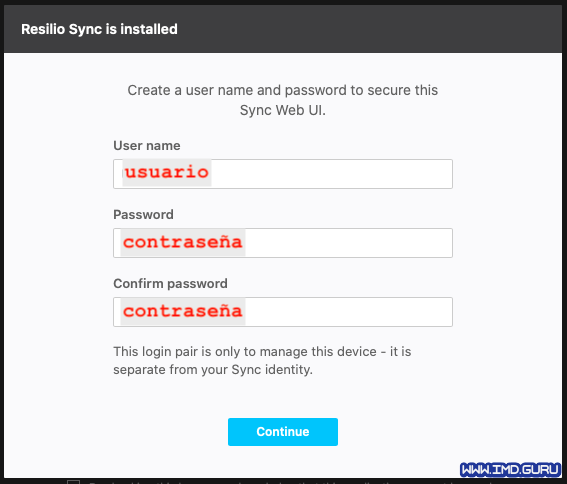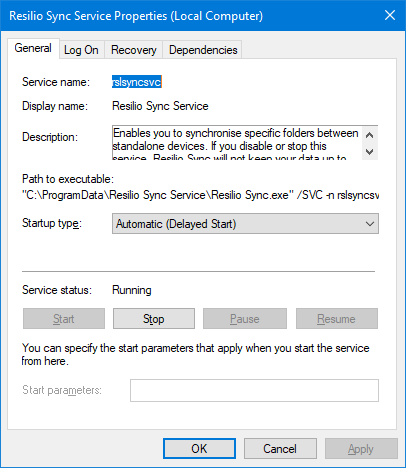

- RESILIO SYNC ON UBUNTU PERMISSION INSTALL
- RESILIO SYNC ON UBUNTU PERMISSION ANDROID
- RESILIO SYNC ON UBUNTU PERMISSION CODE
- RESILIO SYNC ON UBUNTU PERMISSION PLUS
Files within the set shared space are broken into small parts then shared then reassembled on the “client side” when all portions are received. as for the bittorrent protocol here is how it works. it is self hosted so your data will only be on your computers. The more nodes that you have setup with the data that you are syncing the faster it will be synced across devices. RESILIO SYNC ON UBUNTU PERMISSION ANDROID
Works across multiple OS’s including android. you can limit it further on systems by controlling the user permissions and or setting up resilio under its own user. you can also choose if the other clients will have write permissions on the data or just read. RESILIO SYNC ON UBUNTU PERMISSION CODE
you can choose to limit this by making a single use code or a code that expires after a few days or by leaving it open. you add this to resilio sync on another machine or multiple machines.  then you choose to share it and either a link a code or a qr code is generated. After setup you pick the folders that you want to share.
then you choose to share it and either a link a code or a qr code is generated. After setup you pick the folders that you want to share. RESILIO SYNC ON UBUNTU PERMISSION INSTALL
Install the software and setup the user permissions and the places that it will have access to

The setup is very similar to other syncing programs.Started out as bittorrent sync but everyone called it btsync and then when they tried to switch to a paid model they changed to resilio sync.timing can be a small issue if your backup runs long so don’t set it up to run every minute.Great to mix with cron for automating backups on your own.–checksum is the option to add for this.You can set it to instead check hashes for differences which is much slower but it will find all the changes.It will check file sizes and time stamps to see if it needs to sync a new file.
RESILIO SYNC ON UBUNTU PERMISSION PLUS
Plus for backups it will only move files that it can verify have changed which makes it faster and use less data. The -a flag is great as it preserves symbolic links so you will not get stuck in a loop the way that it was possible to do with scp. especially if you use -P which will allow you to watch the progress and continue from where you left off even if it is mid file. so if you lose your connection you can run the same command again and pick up where you left off. what makes it great is the way that it will remember where you left off with a broken or partial sync. I have used it in production on several systems for back ups or syncing data on request. Comes stock on nearly every linux operating system. Used as the back end for most backup systems. If you're using mdadm, this may be needed in /etc/mdadm/mdadm.In our Innards section, we cover backups like Rsync, Nextcloud and some underlying storage. umask, which is 777 less the desired "chmod" number): UUID="XXXXXX" /media/USERNAME/MOUNTPOINT ntfs rw,nosuid,nodev,allow_other,default_permissions,uid=1000,gid=1000,umask=002 0 0 NTFS partitions must be mounted with appropriate read rights in /etc/fstab:Ĭheck your user and group id (10 in example): idĮdit /etc/fstab to mount the drive with read permissions for your user group and for all users (cf. Sudo setfacl -m g:$MYGROUP:rwx /media/$USER Now, add plex user to your user group, and allow this group to access /media/$USER: MYGROUP="$USER" Or add flex user to the folder group (see below) and use sudo chmod -R g+r FOLDER.įix permissions to allow Plex to access /media/$USERĬheck which group you and plex belong to: groups Use sudo chmod -R u+r FOLDER to allow all users. Your folder may not allow plex user or group to read it. Check it with ls -l on the drive or folder that cause issue, to see the group owner, group permissions and user permissions. Your drives may not be mounted to allow plex user to read it. Ubuntu restricts access to /media/$USER through ACL (that's the "+" when you ls -l /media). Plex is run under plex username, so you may encounter the following permission issues: Ls: cannot open directory robin: Permission denied : Permission cd cd robinīash: cd: robin: Permission ls -al robin sudo -u plex bashīash: /home/robin/.bashrc: Permission ls -al How do I give plex access to my home folder without also giving other users access to it? My home folder is encrypted by the way, so that'll probably complicate things a little. 
My first guess seemed to be a correct one It is, as always, a permissions problem. The same happened when trying to access /media/Data.įor me it's quite useless like this, as all of my media files are inside those 2 directories. It showed robin, with an arrow in front of it, but when I tried to expand the directory tree it was empty. When it gave me a file browser, I wanted to go to /home/robin/Videos. I wanted to start by adding a collection. I just installed the Plex media server from the Ubuntu Software Center, and opened the web interface.








 0 kommentar(er)
0 kommentar(er)
